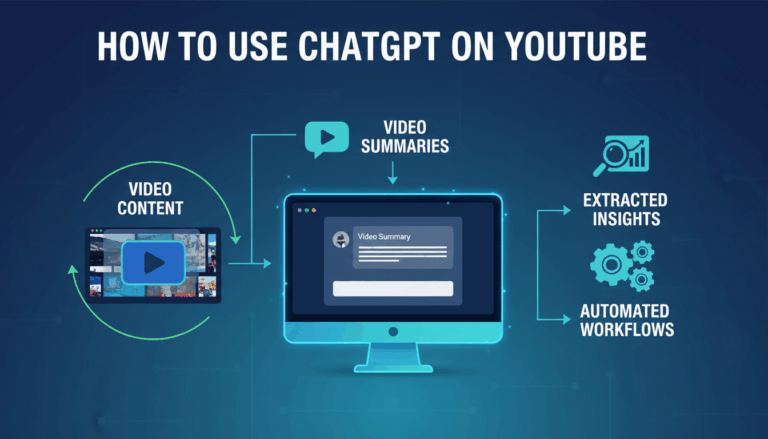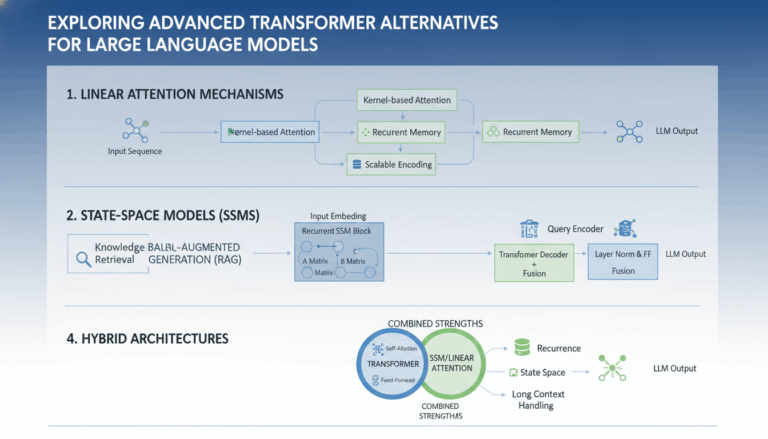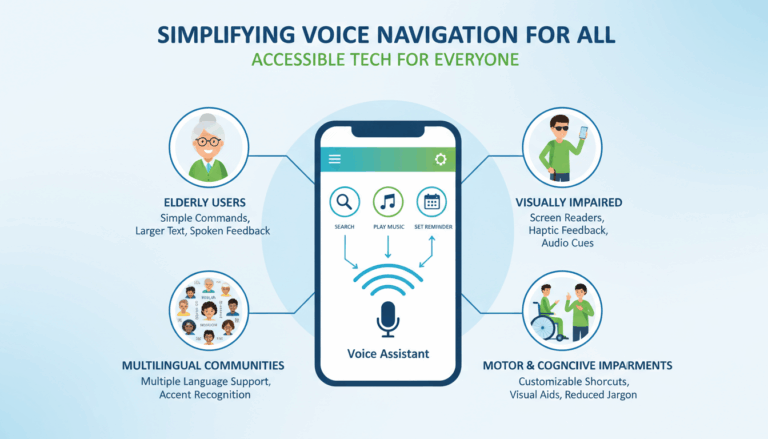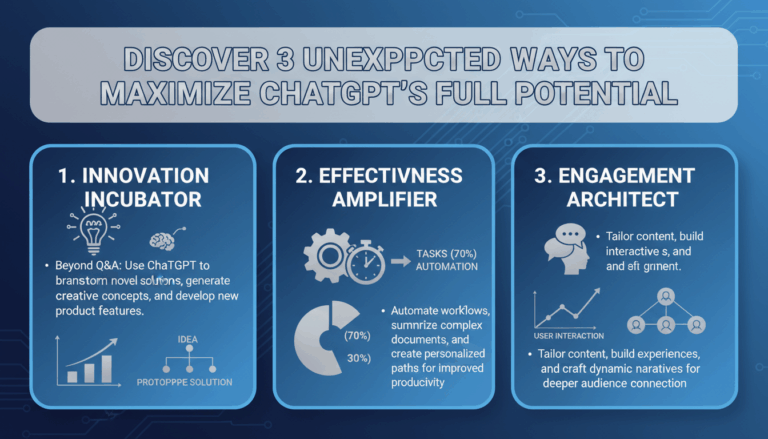Introduction to ChatGPT’s AgentKit
ChatGPT’s AgentKit is a groundbreaking tool designed to empower developers and businesses by integrating advanced AI capabilities directly into their applications. This toolkit marks a significant step forward in the evolution of artificial intelligence applications, providing a more flexible and seamless way to incorporate ChatGPT’s conversational technology into diverse workflows and systems.
At its core, AgentKit offers an accessible interface that simplifies the process of developing and deploying AI-driven features, thus significantly reducing the time and expertise required. This is particularly beneficial for companies looking to enhance their customer service platforms, marketing automation, and user interaction without the need to dive deeply into the complexities of machine learning engineering.
One of the standout aspects of AgentKit is its integration capabilities. It supports various programming languages and frameworks, which means it can fit smoothly into existing tech stacks. This makes it an ideal solution for companies that want to leverage AI without dismantling their current infrastructure. Developers can use predefined templates and APIs provided by AgentKit to quickly add conversational features to their apps.
AgentKit also brings personalization to the forefront. By utilizing OpenAI’s powerful language models, it allows for the creation of personalized user experiences. Such capabilities enable businesses to craft interactions that are not only intelligent but also tailored to individual user needs, promoting higher engagement and satisfaction.
Another key feature is AgentKit’s emphasis on security and compliance. It provides robust mechanisms to ensure data governance and privacy management, a crucial component for industries dealing with sensitive information. These measures help organizations adhere to stringent regulatory requirements, thereby maintaining trust with their clients.
Furthermore, the kit supports real-time analytics and feedback loops, enabling companies to continuously refine and improve their AI solutions. This adaptability and the ability to quickly iterate on AI deployments provide a strategic advantage in rapidly changing market conditions.
In essence, ChatGPT’s AgentKit is reshaping the landscape of AI integration. By offering a combination of flexibility, extensive support, and advanced features, it presents a viable pathway for businesses seeking to innovate and remain competitive in an increasingly AI-driven world. The ease of implementation and extensive capabilities position it as an attractive alternative or complement to established no-code tools like Zapier. By empowering users to harness cutting-edge AI with minimal barriers to entry, AgentKit truly democratizes access to sophisticated conversational technologies.
Key Features of AgentKit
ChatGPT’s AgentKit stands out by offering a suite of features designed to enhance AI-driven application development. Its key capabilities are carefully crafted to streamline integration, customize user experience, and ensure robust performance.
One of the foremost features of AgentKit is its extensive integration support. It is built to seamlessly connect with a wide range of programming languages and frameworks such as Python, JavaScript, and others. This compatibility allows developers to effortlessly embed AI functionalities into their existing systems. For instance, incorporating ChatGPT capabilities into a Python-based backend is straightforward, thanks to AgentKit’s comprehensive API documentation and example scripts that guide developers through the process step-by-step.
Additionally, AgentKit excels in providing pre-built templates and workflow components, which significantly reduce the time required to deploy AI models. These templates are customizable, offering businesses the flexibility to tailor AI interactions according to their specific needs. Customization includes setting contextual parameters for conversations, adjusting model behaviors based on user profiles, and integrating contextual understanding relevant to particular industries, such as finance or healthcare.
Another crucial aspect is AgentKit’s commitment to personalization. Powered by advanced natural language processing models from OpenAI, the tool can adapt responses based on user input, interests, and historical interactions. This dynamic adaptability ensures that user experiences are not only relevant but also engaging, fostering greater user satisfaction. For example, a retail application utilizing AgentKit can offer personalized product recommendations by analyzing customer queries and previous purchase patterns.
Security and compliance are priorities carved deeply into AgentKit’s architecture. The platform includes features ensuring data privacy and compliance with regulations such as GDPR and CCPA. These robust security measures include data encryption in transit and at rest, user authentication protocols, and customizable access controls. Consequently, companies can confidently integrate AI solutions knowing that sensitive customer data will remain secure and compliant with global standards.
AgentKit also supports real-time analytics, enabling businesses to continuously monitor and evaluate AI interactions. By integrating feedback loops into the conversational processes, developers can gather insights on user behavior, interaction efficacy, and improvement areas. This capability not only aids in optimizing the AI models but also empowers businesses to make informed decisions based on collected data.
Moreover, the interactive and extensible nature of AgentKit allows developers to further augment their applications with third-party services. For example, a company could use AgentKit in conjunction with customer relationship management (CRM) systems to automate and enhance interactions by fetching real-time customer data during service calls.
Each of these features emphasizes not just the technological prowess of AgentKit but also its practical utility in real-world applications. By easing the integration process, enhancing personal interactions, and ensuring security, AgentKit positions itself as a versatile tool for companies aiming to harness AI fully.
Comparing AgentKit and Zapier: A Functional Analysis
In the realm of automation and AI-driven application development, AgentKit and Zapier stand out as powerful tools catering to different user needs. A closer examination of their functionalities reveals essential differences and similarities that delineate their usage scenarios and strengths.
AgentKit is crafted to infuse applications with advanced AI capabilities, leveraging the prowess of OpenAI’s language models to create engaging and contextually aware interactions. This tool is designed for developers who require AI-driven features that integrate seamlessly with existing systems. Its flexibility is derived from extensive support for various programming languages, such as Python and JavaScript, enabling easy incorporation into current tech architectures. It offers APIs and customizable templates that significantly reduce the complexity and time needed for deployment. An example of this might be a business enhancing its customer service platform by embedding intelligent conversational agents that provide personalized responses based on user data.
Zapier, in contrast, is heralded for its user-friendly approach to workflow automation through a no-code framework. It allows individuals and businesses to connect different web applications using “Zaps,” which automate repetitive tasks without the need for programming expertise. This makes Zapier incredibly accessible for users ranging from small business owners to non-technical teams in larger organizations. The ability to seamlessly integrate services by setting up trigger-action events enables it to cater to a broad spectrum of needs across industries. For instance, a marketing team could use Zapier to automatically export and consolidate survey results from Google Forms to an Excel spreadsheet while notifying team members via Slack.
While AgentKit focuses on embedding AI capabilities deeply into applications, allowing for highly tailored and dynamic user interactions, Zapier thrives on its capacity to link disparate services with simplicity and ease. Both platforms emphasize reducing operational overhead, albeit through different strategies—AgentKit by optimizing AI integration within software solutions and Zapier by automating task management across applications.
Security and compliance are pivotal in both platforms but are addressed in distinct manners. AgentKit embeds proactive data security measures as part of its design, suitable for industries where data sensitivity is paramount, such as healthcare or finance. It includes features for compliance with major data protection regulations like GDPR. Zapier, notes its adherence to security protocols through its policies and regularly updated documentation, ensuring user data remains secure while facilitating cross-application workflows.
Thus, selecting between AgentKit and Zapier is primarily contingent upon the specific needs and expertise of the user. AgentKit provides a detailed AI integration experience, bringing rich conversational dynamics to applications with robust security measures. Conversely, Zapier offers extensive accessibility to automation novices and experts alike, facilitating efficient task automation through an intuitive, no-code interface. Each caters to different workflow goals, be it intricate AI model integration or streamlined process automation without the need to write code.
Potential Impact of AgentKit on No-Code Automation Tools
AgentKit’s emergence marks a pivotal point for no-code automation tools like Zapier, fundamentally challenging their position in the marketplace. While traditional no-code platforms thrive by simplifying automation for non-technical users, AgentKit introduces a sophisticated layer of AI that injects intelligence into automation processes.
One significant transformation AgentKit brings is the enhancement of automation tasks with contextual awareness. Unlike basic triggers and actions in traditional no-code tools, AgentKit can ingest and process vast datasets using OpenAI’s language models. This results in more dynamic and responsive automation flows, where the AI can make nuanced decisions based on user interactions and external data feeds—fundamentally altering how automation tasks are configured and executed.
For instance, consider automating a customer support workflow. Traditional no-code tools might simply move information from a chatbot to a ticketing system based on predefined keywords. AgentKit, however, can analyze the sentiment, intent, and historical context of conversations in real-time, adapting responses and routing tasks based on sophisticated criteria, and even learning from each interaction to improve future responses.
Furthermore, AgentKit empowers businesses to create highly personalized user experiences. By incorporating machine learning models, it tailors communications and automations down to individual preferences. For example, in a marketing campaign, AgentKit could dynamically adjust communication strategies based on real-time analysis of user engagement patterns, thus increasing relevance and engagement rates compared to static workflows in traditional no-code environments.
The potential impact on development workflows is equally profound. While no-code tools democratize technology by reducing the need for traditional coding, AgentKit lowers the barrier for implementing AI-driven solutions. This shift could see a reallocation of roles within teams; whereas no-code solutions are often seen as cross-departmental tools used by operations or marketing teams, AI-powered tools like AgentKit might necessitate collaboration with AI specialists to fully harness their capabilities.
AgentKit’s focus on integration capabilities also complements traditional automation structures. It seamlessly connects with existing infrastructures, enabling more complex automation scenarios that harness both AI and no-code benefits. This opens up hybrid opportunities where routine tasks are managed by no-code tools, while AgentKit handles complex decision-based interactions, thus enhancing overall operational efficiency.
Importantly, AgentKit challenges the status quo of no-code tools by introducing robust data privacy and security measures essential for enterprises dealing with sensitive information. This element makes it particularly appealing for sectors like finance and healthcare, where compliance and data protection are critical.
In summary, AgentKit redefines what’s possible with automation by intertwining AI with traditional workflows, creating a compelling case for organizations to integrate AI at a core level while still valuing the ease of use that no-code platforms offer. Through its advanced capabilities, it is poised not just to coexist with no-code tools, but to elevate and expand their functional boundaries, offering unprecedented levels of automation sophistication and opportunity for innovation.
Getting Started with AgentKit: A Step-by-Step Guide
To start utilizing AgentKit effectively, follow a structured approach to integrate its AI functionalities into your applications. Here’s a detailed guide to help you through the initial setup and subsequent application integration process.
- Set Up Your Environment
Begin by ensuring that your development environment is ready for integration. AgentKit supports multiple programming languages including Python, JavaScript, and others. Install the necessary software development kits (SDKs) for the language of your choice.
`bash
pip install openaiFirst, be sure your environment has access to the internet, as you will need to download dependencies and access external APIs for integration.
- Obtain API Credentials
Sign up for an account on the AgentKit platform, if you haven’t already. After registration, navigate to the dashboard to retrieve your API key. This key is essential for authenticating your requests and accessing AgentKit’s functionalities.
Store your API credentials securely in environment variables or configuration files—ensure they are not hardcoded in your source code to enhance security.
- Understand the API Documentation
Spend time reviewing the comprehensive API documentation provided by AgentKit. Understanding endpoint capabilities, payload structures, and response formats is crucial for successful integration.
Utilize example scripts and tutorials within the documentation to gain familiarity with typical use cases and best practices.
- Initial Configuration and Connection
Using the API key, initiate a connection from your application to AgentKit’s services. Start by configuring a simple API call to ensure your setup is functioning correctly. Here’s an example in Python:
“`python
import openai
openai.api_key = “your-api-key”
response = openai.ChatCompletion.create(
model=”gpt-3.5-turbo”,
messages=[{“role”: “system”, “content”: “Hello, how can I assist you today?”}],
)
print(response)
“`
Execute this script to verify that your application can communicate with the AgentKit API and receive responses.
- Implement and Customize Agent Features
With a successful connection, start implementing more complex AI-driven interactions. Utilize the pre-built templates available within AgentKit to save time. These templates can be tuned according to your application’s specific requirements.
For instance, if developing a customer service bot, adjust the AI model to recognize and prioritize frequently asked questions, smoothly transitioning conversations to human agents when needed.
- Integration with Existing Systems
For businesses looking to integrate AI capabilities with existing systems like CRMs or data processing pipelines, use AgentKit’s integration capabilities. Utilize webhooks and API connectors to ensure seamless data flow between AgentKit and other platforms.
Consider setting trigger-based integrations when specific conditions are met, thereby automating routine tasks within your existing infrastructure.
- Monitor and Optimize Performance
Implement real-time monitoring tools to track the performance and effectiveness of your AI features. AgentKit provides analytics to help refine conversational strategies based on user interactions.
Regularly review analytics to identify areas of improvement and adjust configurations for optimal performance.
- Ensure Compliance and Security
Verify that your implementation adheres to compliance regulations. Utilize AgentKit’s built-in security features like encryption and access controls to protect sensitive data.
Consider conducting periodic security audits to ensure ongoing adherence to data protection standards such as GDPR and CCPA.
By following these steps, you will be well-equipped to leverage the full potential of AgentKit, creating sophisticated AI-driven applications that are both innovative and secure.



